Juneteenth Celebrations Begin with Witness Stones Installation in Old Center Cemetery

Audio By Carbonatix
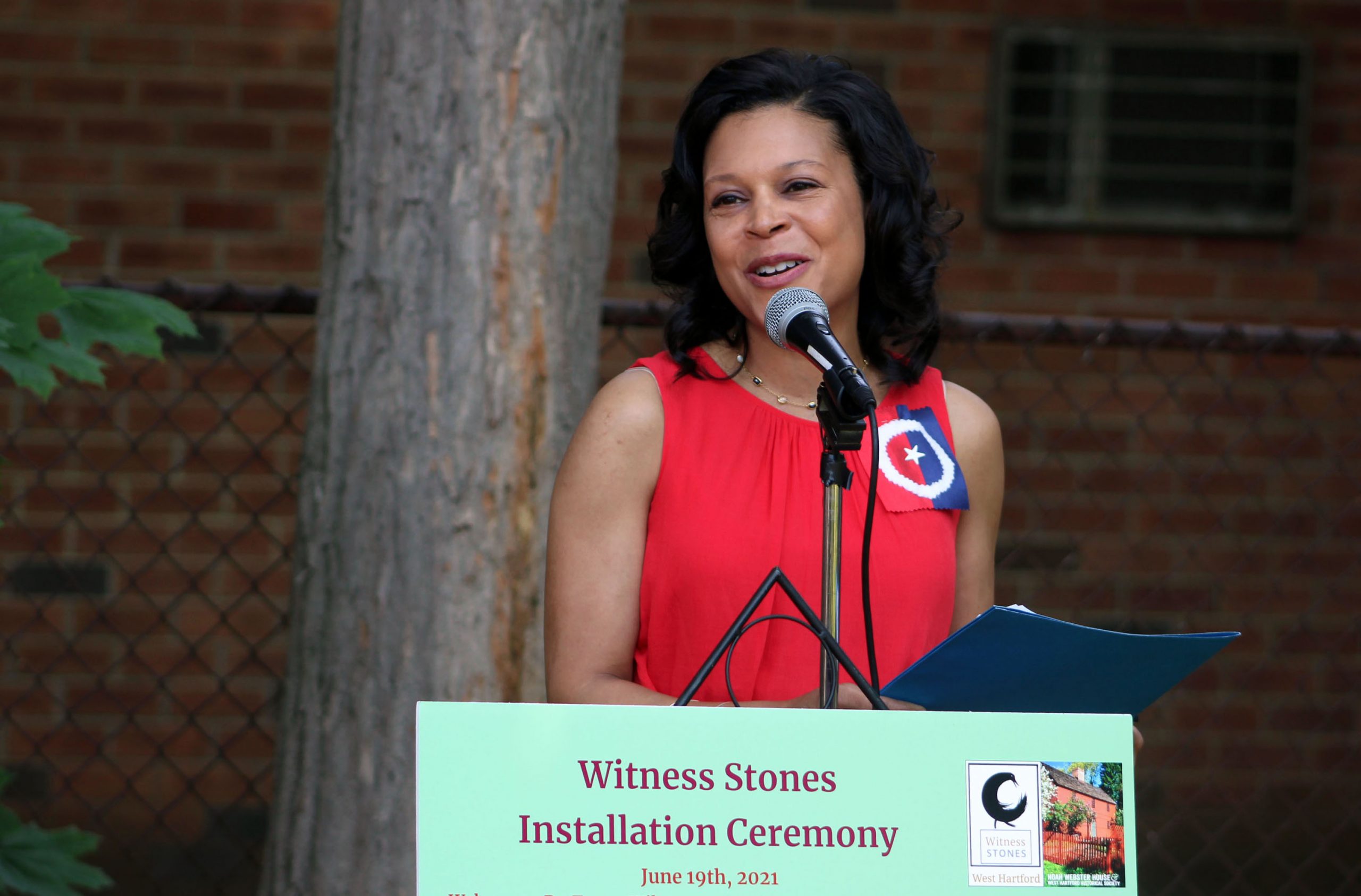
State Rep. Tammy Exum. Juneteenth Witness Stones Project at Old Center Cemetery Photo Credit: Sophie Christensen
About 50 community members gathered in West Hartford’s Old Center Cemetery for speeches by excited supporters, including Mayor Shari Cantor, State Rep Tammy Exum, Dr. Lorna Thomas-Farquharson, and a few middle school students.
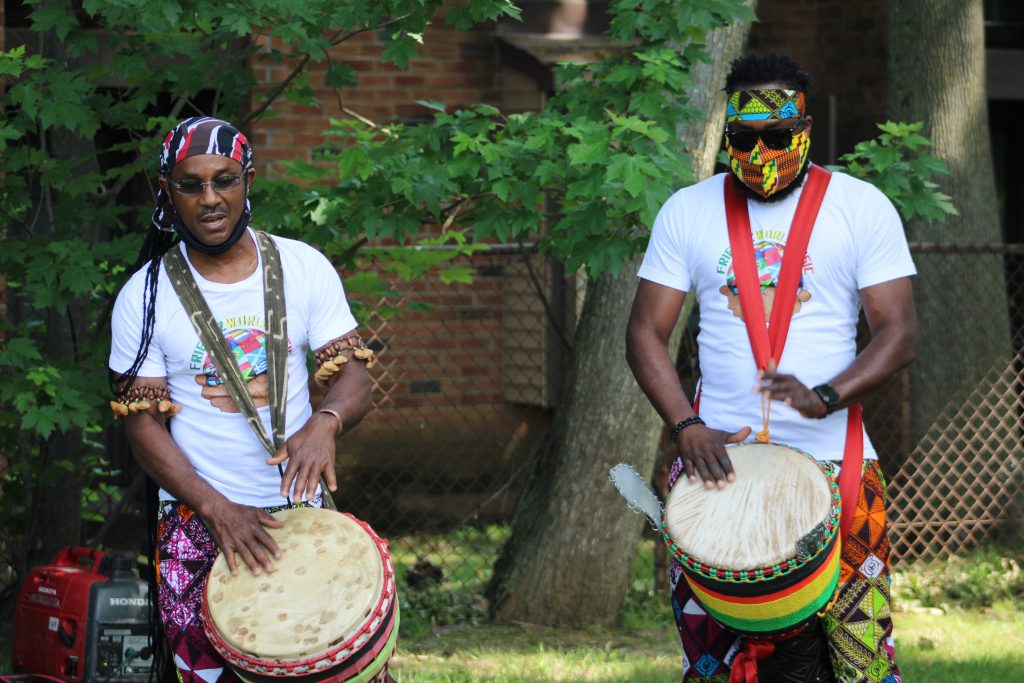
Afro Caribbean Drummers at Juneteenth Witness Stones Project. Photo Credit: Sophie Christensen
By Sophie Christensen and Lily Guberman. Photos by Sophie Christensen, Lily Guberman, and Ronni Newton
Even before entering the cemetery, the powerful sound of Afro Caribbean drumming could be heard from a block away. The sounds of the drums traveled far, but they could not overpower the enthusiastic voices of the crowd, about50 people of many ages and backgrounds.
Sixteen speakers each placed a new Witness Stone in the cemetery. Before placing the stones, speakers shared information about the enslaved person’s life. They also shared poems and words of gratitude for the organizers of the Witness Stones Project. Similar sentiments ran through every speech: triumph and joy for Juneteenth’s status as a national holiday, but also sadness and solemn acknowledgement for the history of enslavement in West Hartford.
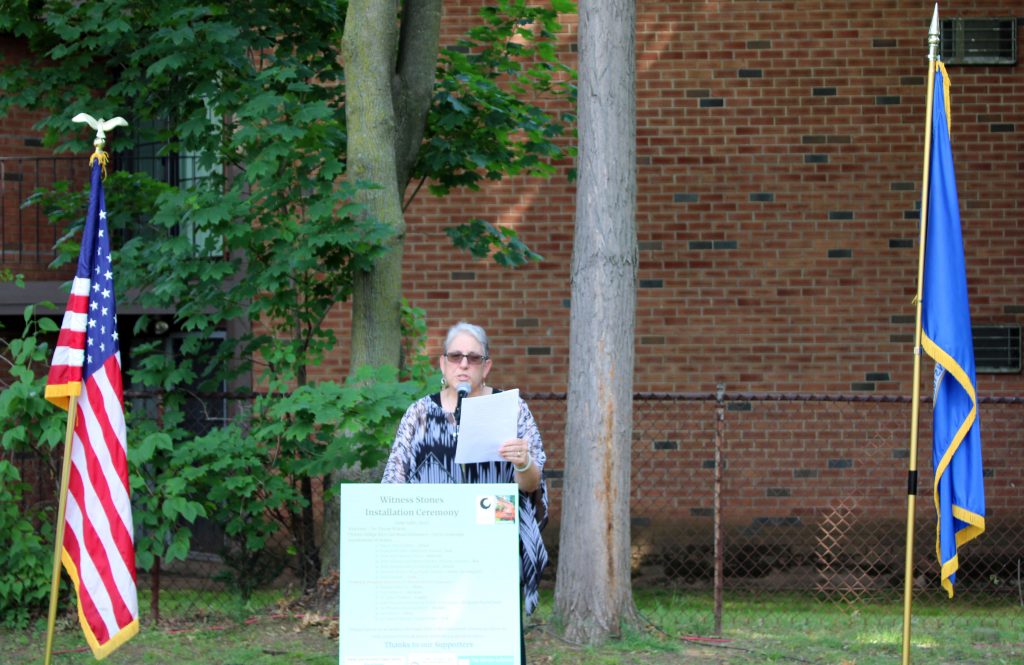
Elizabeth Devine. Juneteenth Witness Stones Project at Old Center Cemetery Photo Credit: Sophie Christensen
Elizabeth Devine, a founder of the Witness Stones Project, introduced the ceremony. “The project seeks to honor the humanity, the agency and the resistance of those who were enslaved by naming their names and telling their stories,” she said.
By spreading this knowledge, they hope to help the West Hartford community battle oppression and understand the cruelty of slavery. She also gave thanks to everyone who made the event possible, and to those gathered at the cemetery.
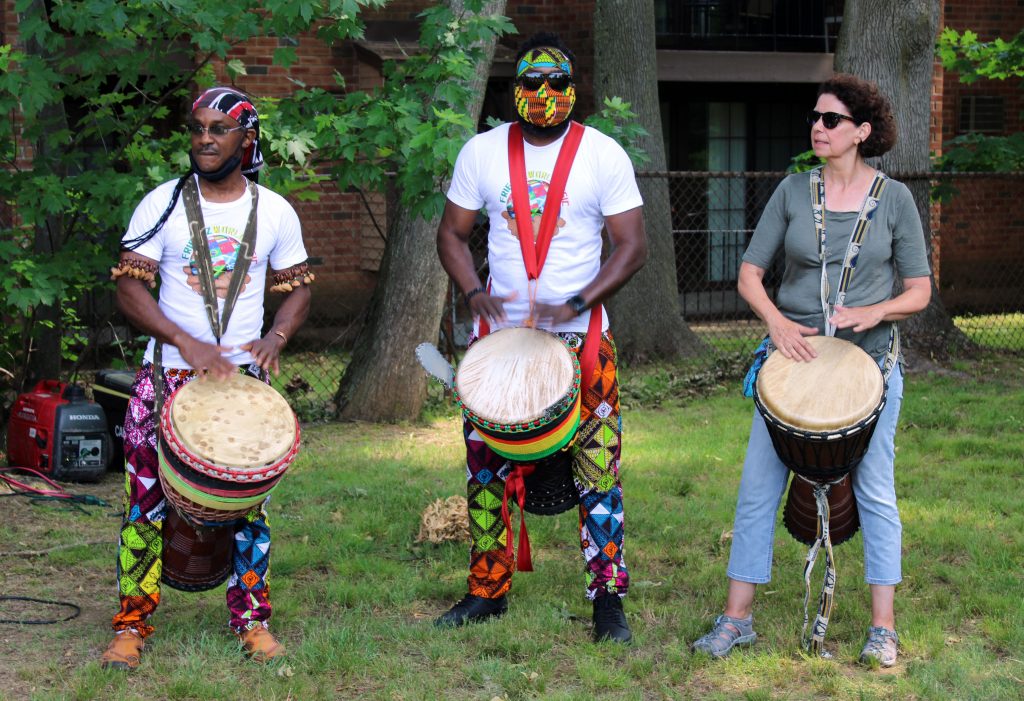
Juneteenth Witness Stones Project at Old Center Cemetery. Photo Credit: Sophie Christensen
Next, members of the Trinity College Afro Caribbean Drummers performed. This is how our ancestors used to pass the time, said one of the drummers. “People think this is just a drum, but it is a life also … wherever you are, the drum lives. Let us show you how.”
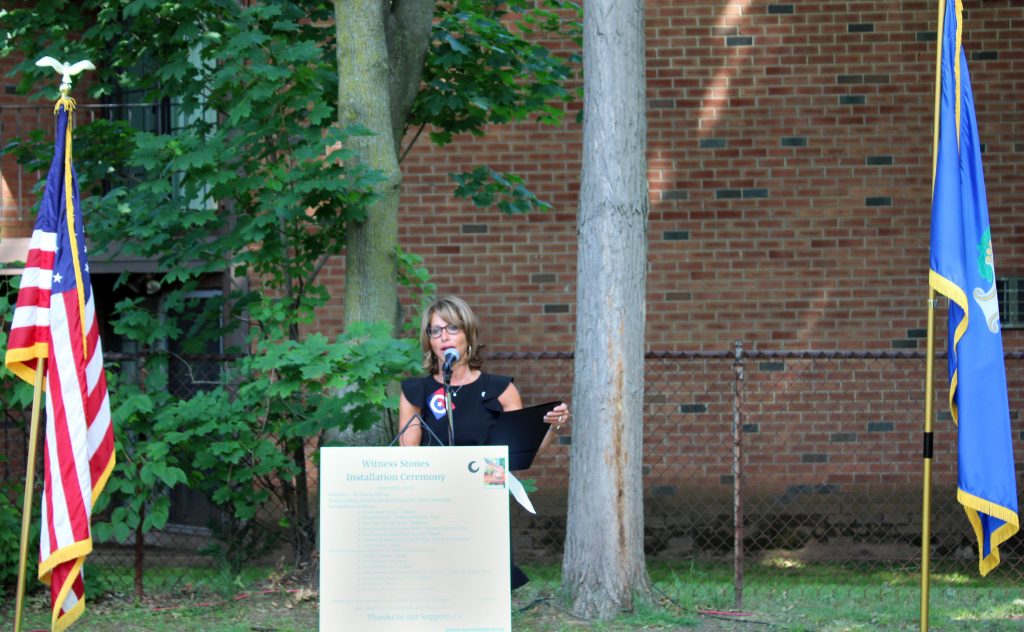
Mayor Shari Cantor reads a proclamation on Juneteenth at the Witness Stones Project installation at Old Center Cemetery. Photo Credit: Sophie Christensen
Following the performance, Mayor Shari Cantor was the first to speak and place a Witness Stone. After reflecting on the numerous slave-owning residents of West Hartford, she read aloud an official proclamation. Cantor placed a Witness Stone inscribed with “Infant,” as the name of the child is still unknown.
A series of speeches and remarks followed Mayor Cantor, along with the placement of the other 14 Witness Stones, for a total of 15 added to the cemetery on Saturday.
Speakers included Rosepreet Kaur (Sedgwick student), state Rep. Tammy Exum, Arati Awasthi and Saurya Chettri (Bristow students), Zella Jackson and Grayson Rivers (King Philip students), Gail Crockett, Maggie Roberts, Carl Johnson, Dr. Lynn Thomas, Isais Wooden and Regina Miller (Kingswood Oxford students), Dr. Roszena Haskins, Ann Mione.Stae and Dr. Lorna Thomas-Farquharson.
State Rep. Tammy Exum reminded us that “many of the prominent streets and buildings, such as Whiting Lane and Sedgwick, were named after early enslavers.”
The Witness Stones Project has allowed the community to learn how enslaved people in West Hartford were treated no better than “objects listed among household items or animals,” Exum said. She placed a stone inscribed with the name “Neptune.”
Participating in research for the Witness Stones Project gives “a voice to the voiceless,” said King Philip Middle School student Zalla Jackson. The stone she placed said “Dinah.”
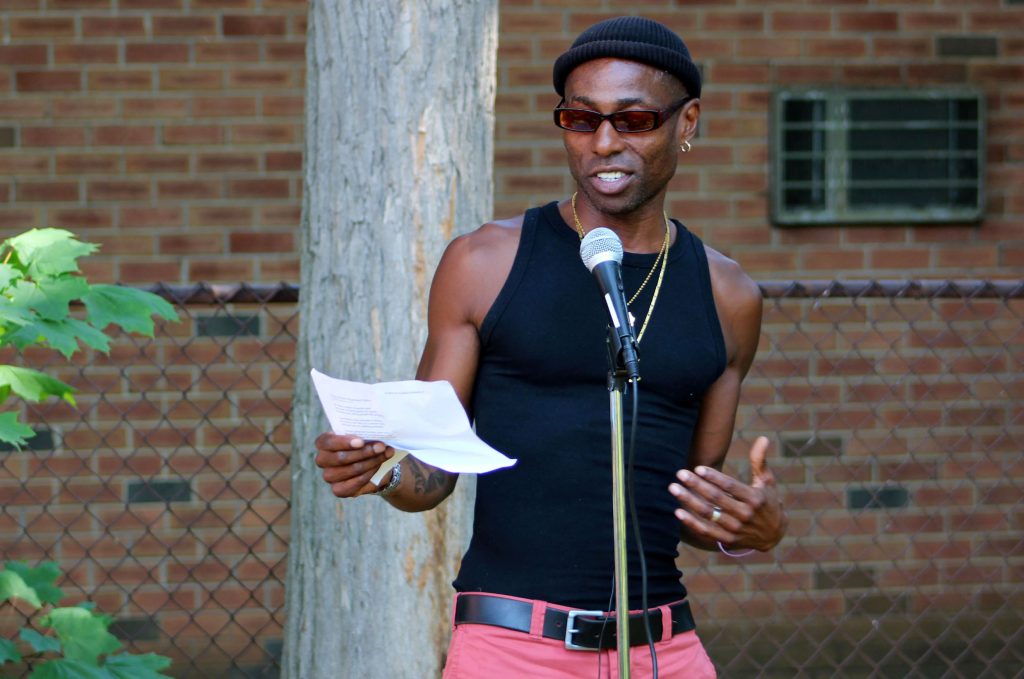
Frederick Douglass Knowles II Juneteenth Witness Stones Project at Old Center Cemetery Photo Credit: Sophie Christensen
Hartford Poet Laureate Frederick Douglass Knowles II recited his poem entitled “Ancestry,” which he wrote after learning about an enslaved person named Rose who lived in New Haven, CT. In his poem, he wondered about the favorite color of Rose’s master, and spoke about how colors can represent actions. Knowles finished by saying he thought Rose’s favorite colors would be green and yellow, “the colors of shoots of plants growing in spring.”
“As an African American living in West Hartford … Peleg’s story struck me deeply. I was blissfully unaware of the reality of slavery in my own neighborhood,” admitted Kingswood Oxford student Isais Wooden.
Peleg Nott was one of the few luckier enslaved people because he experienced a semblance of dominion over his own life. Wooden said he hopes his ancestors had lives that closely resembled that of Peleg Nott, in which a taste of freedom was possible. He and Regina Miller, another KO student, placed a stone that read “Peleg and Rachel Nott.”
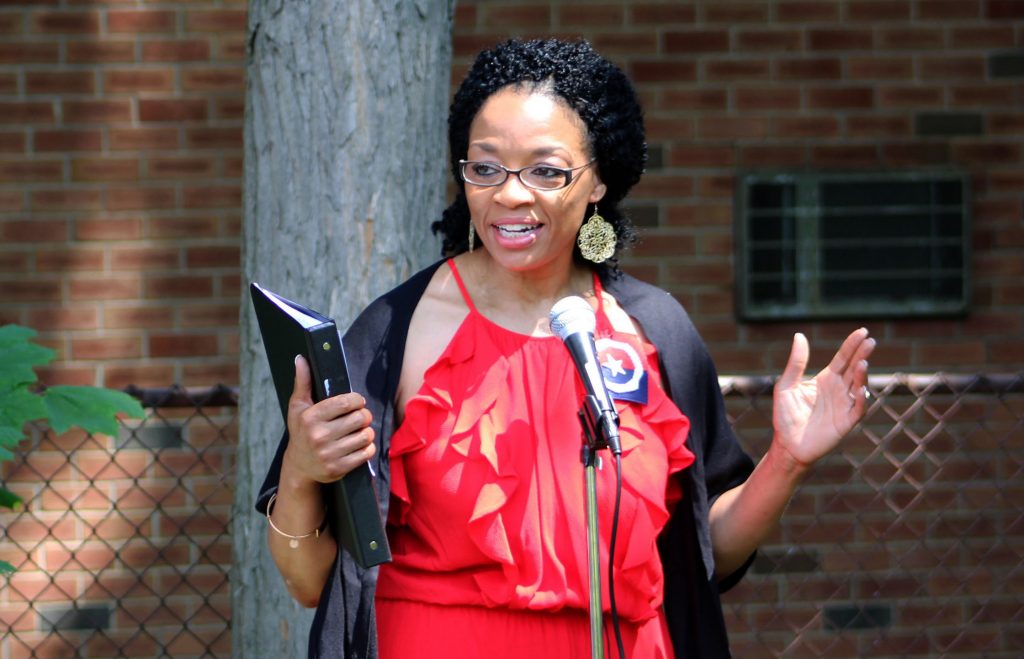
Dr. Lorna Thomas-Farquharson. Juneteenth Witness Stones Project at Old Center Cemetery Photo Credit: Sophie Christensen
Lastly, Dr. Lorna Thomas-Farquharson, vice chair of the West Hartford Board of Education, spoke about the trans-generational influence of the Witness Stones Project. Recognizing and sharing the names of those enslaved in West Hartford not only benefits us here, but benefits generations to come, she said.
By placing a Witness Stone, we witness it. We see it. “When you see, you cannot unsee,” she reminded those in attendance, and therein lies the power of the project.
Thomas-Farquharson concluded the ceremony by placing the final Witness Stone, inscribed with “Jack.”
After the Witness Stones installation, West Hartford’s Juneteenth celebration continued with a procession to Town Hall where there was music, food, a bazaar, and more, and the day ended with the unveiling of the MLK39 Racial Equity mural.
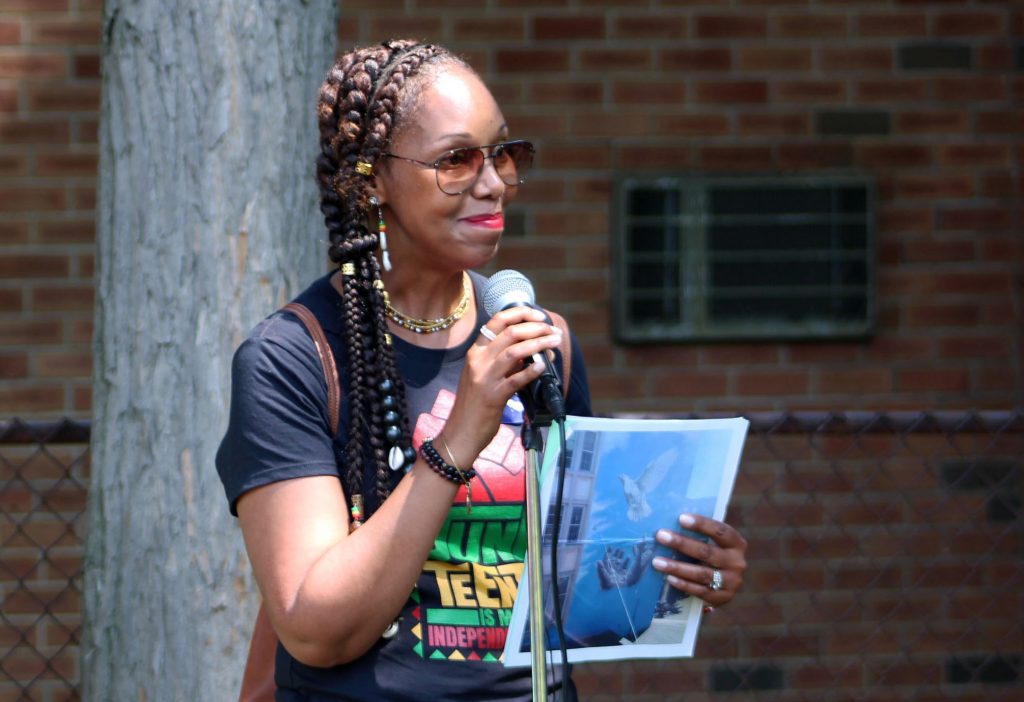
Juneteenth Witness Stones Project at Old Center Cemetery. Photo Credit: Sophie Christensen
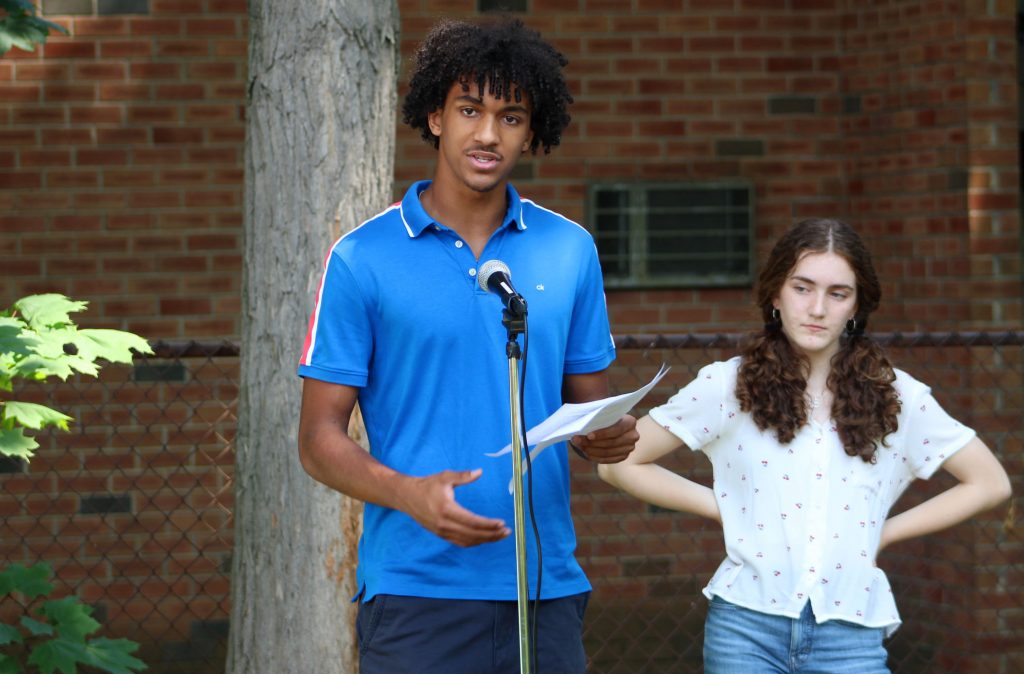
Juneteenth Witness Stones Project at Old Center Cemetery. Photo Credit: Sophie Christensen
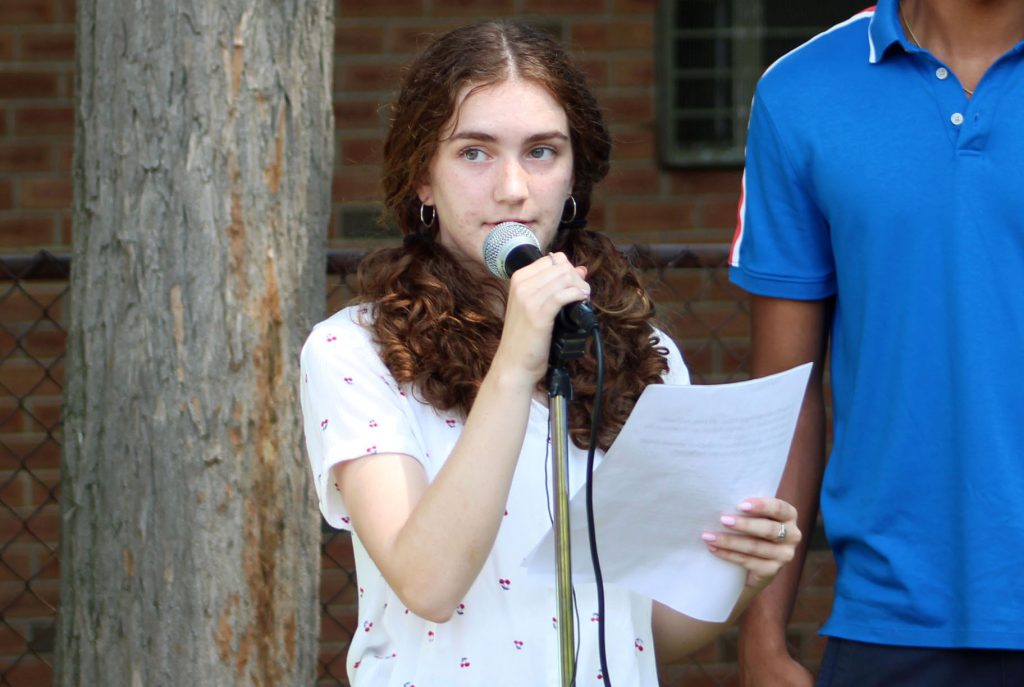
Regina Wilson. Juneteenth Witness Stones Project at Old Center Cemetery. Photo Credit: Sophie Christensen
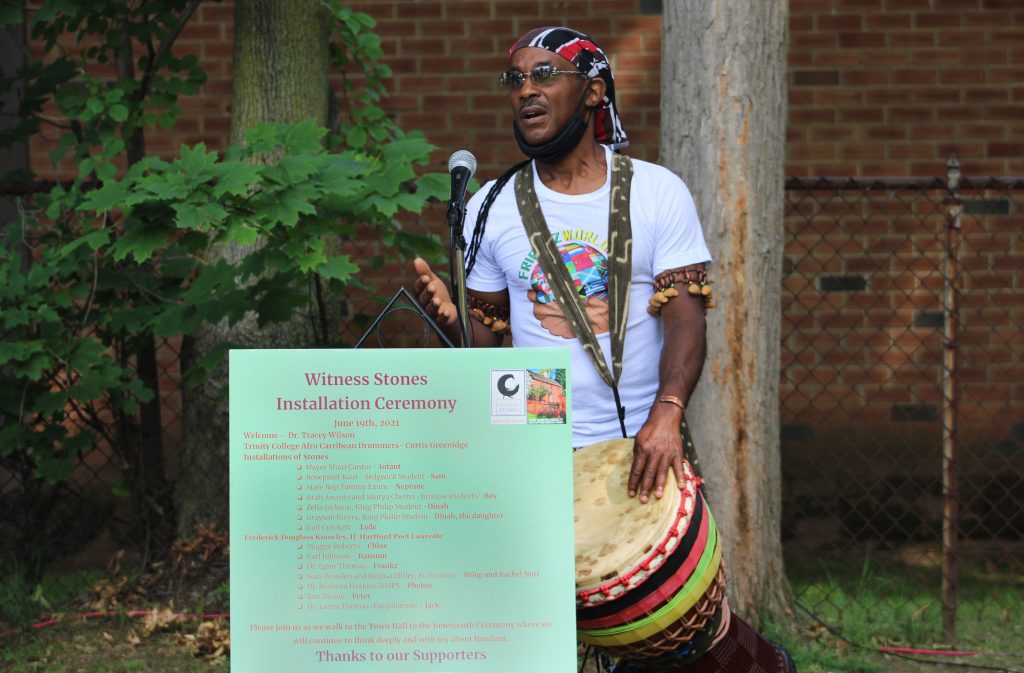
Juneteenth Witness Stones Project at Old Center Cemetery. Photo Credit: Sophie Christensen
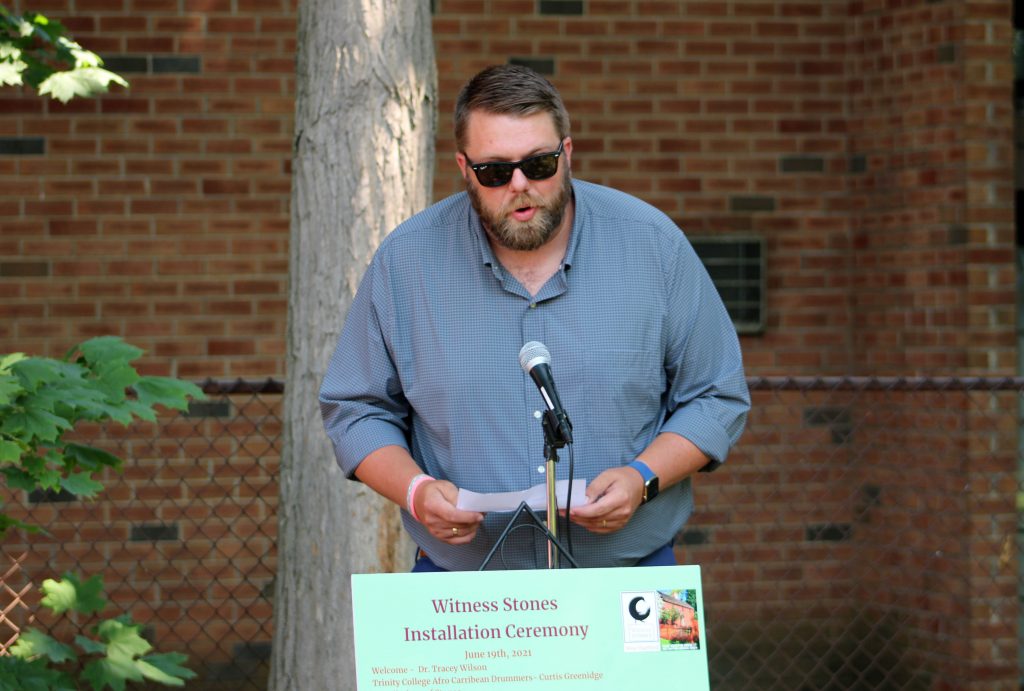
Juneteenth Witness Stones Project at Old Center Cemetery. Photo Credit: Sophie Christensen
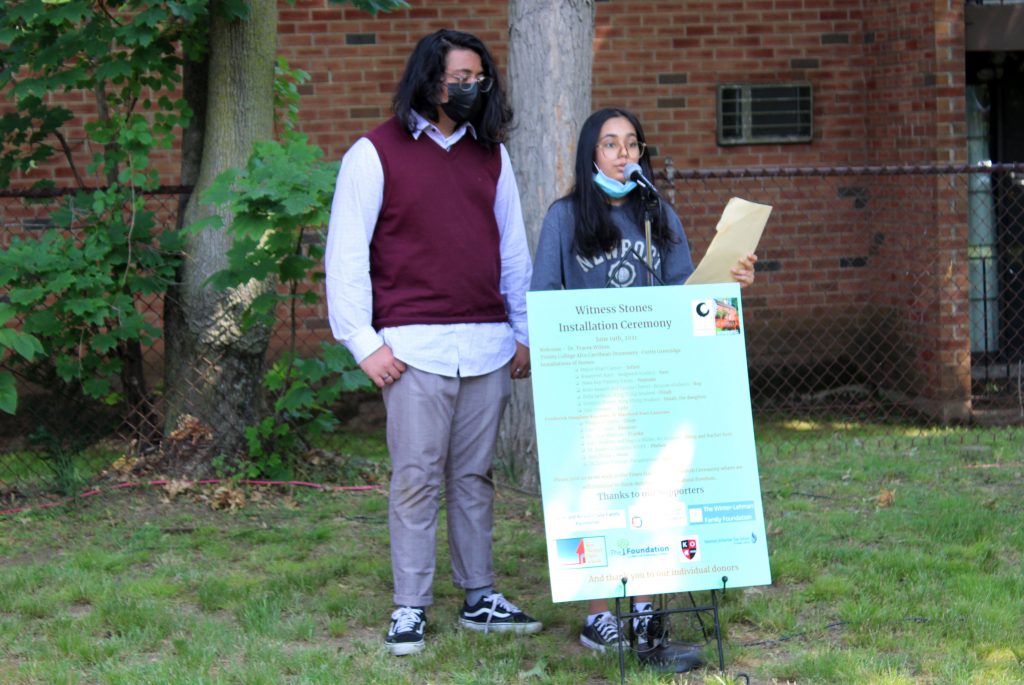
Juneteenth Witness Stones Project at Old Center Cemetery. Photo Credit: Sophie Christensen
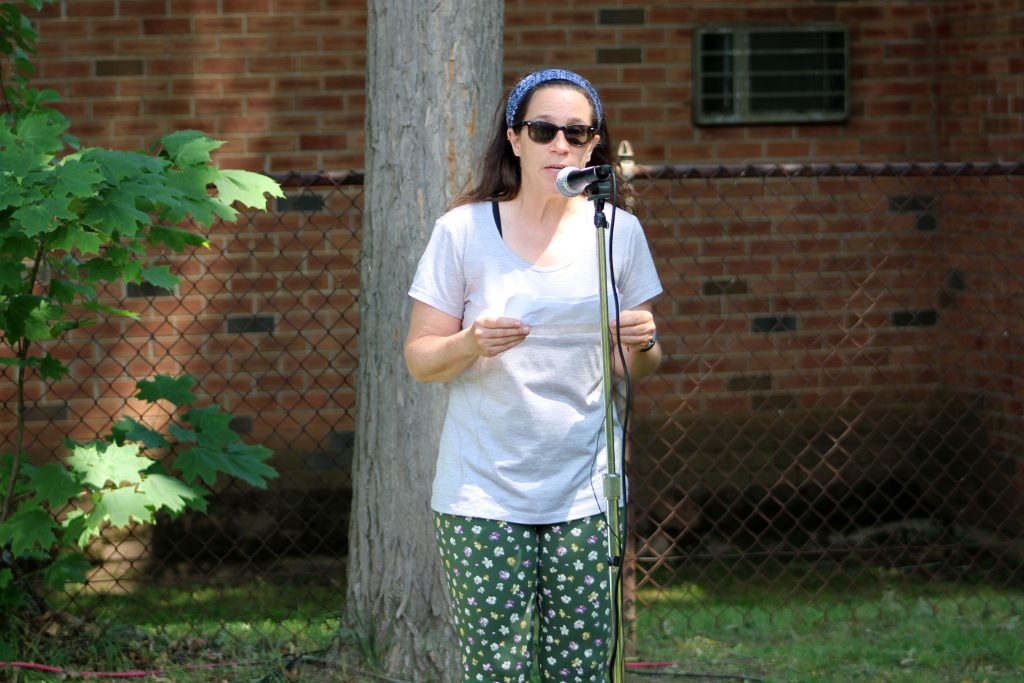
Juneteenth Witness Stones Project at Old Center Cemetery. Photo Credit: Sophie Christensen
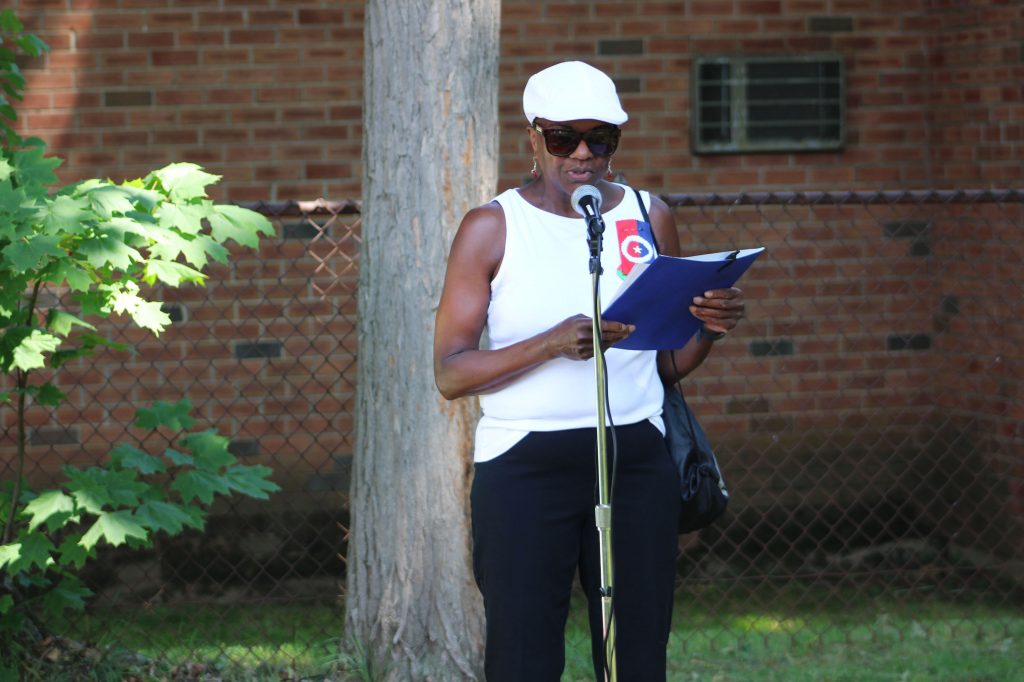
Juneteenth Witness Stones Project at Old Center Cemetery. Photo Credit: Sophie Christensen
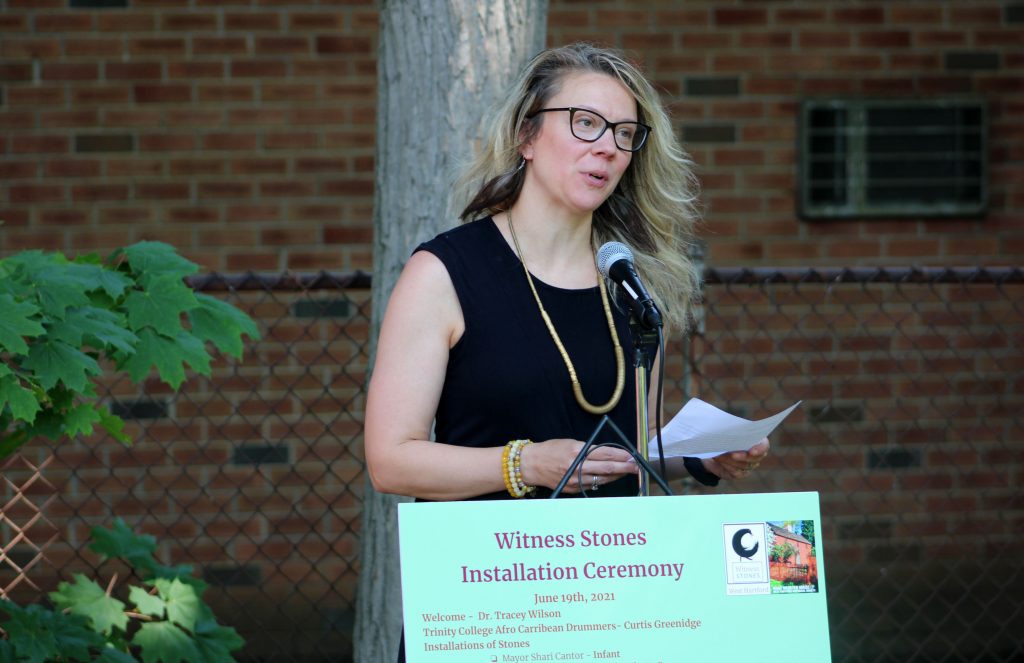
Juneteenth Witness Stones Project at Old Center Cemetery. Photo Credit: Sophie Christensen
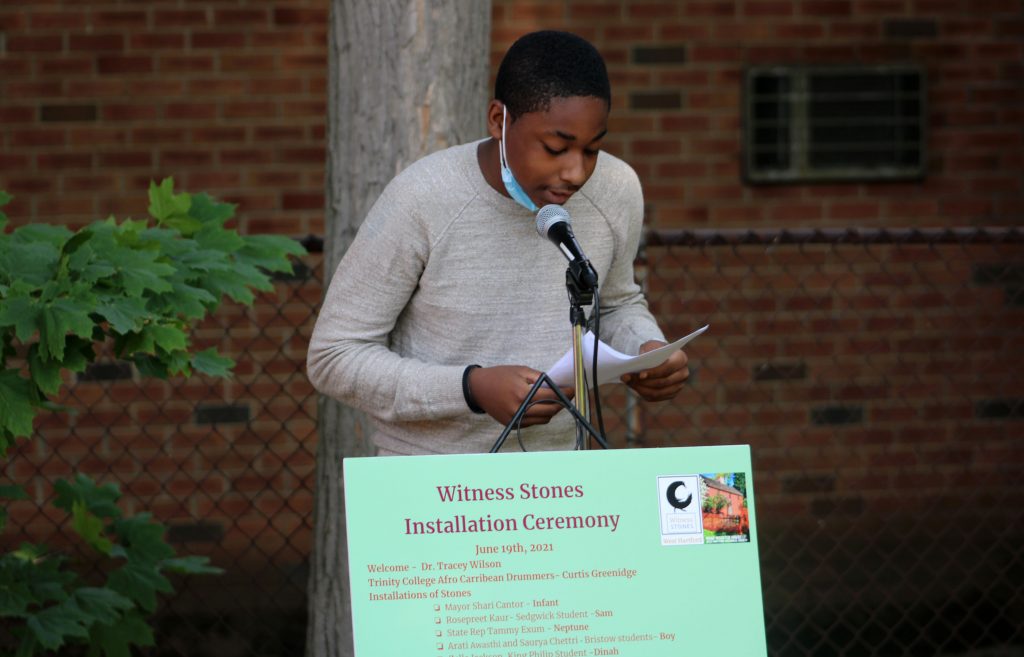
Juneteenth Witness Stones Project at Old Center Cemetery. Photo Credit: Sophie Christensen
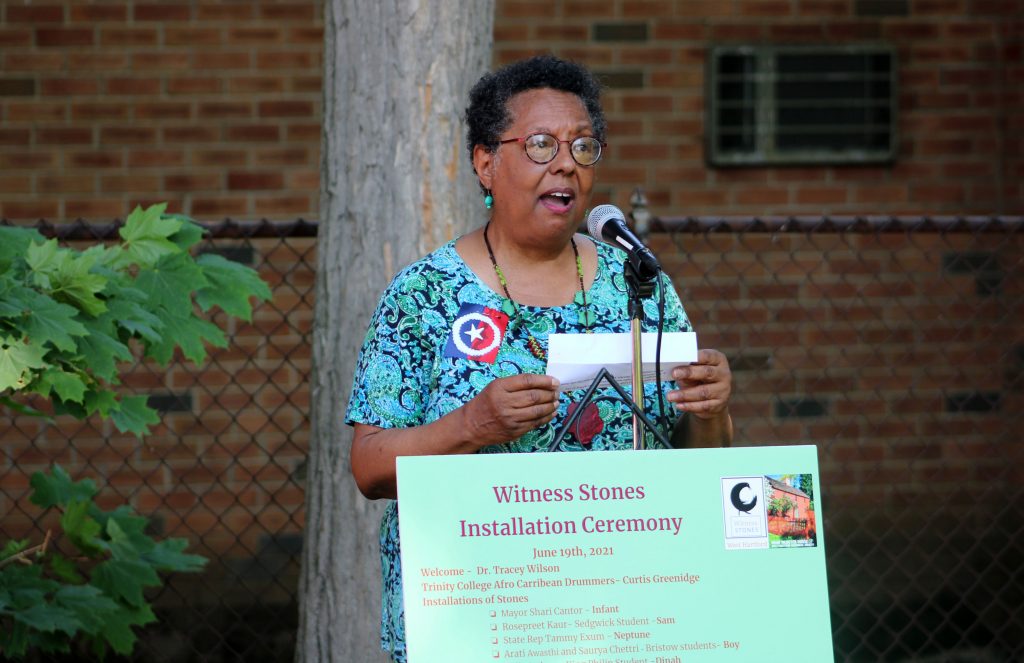
Juneteenth Witness Stones Project at Old Center Cemetery. Photo Credit: Sophie Christensen
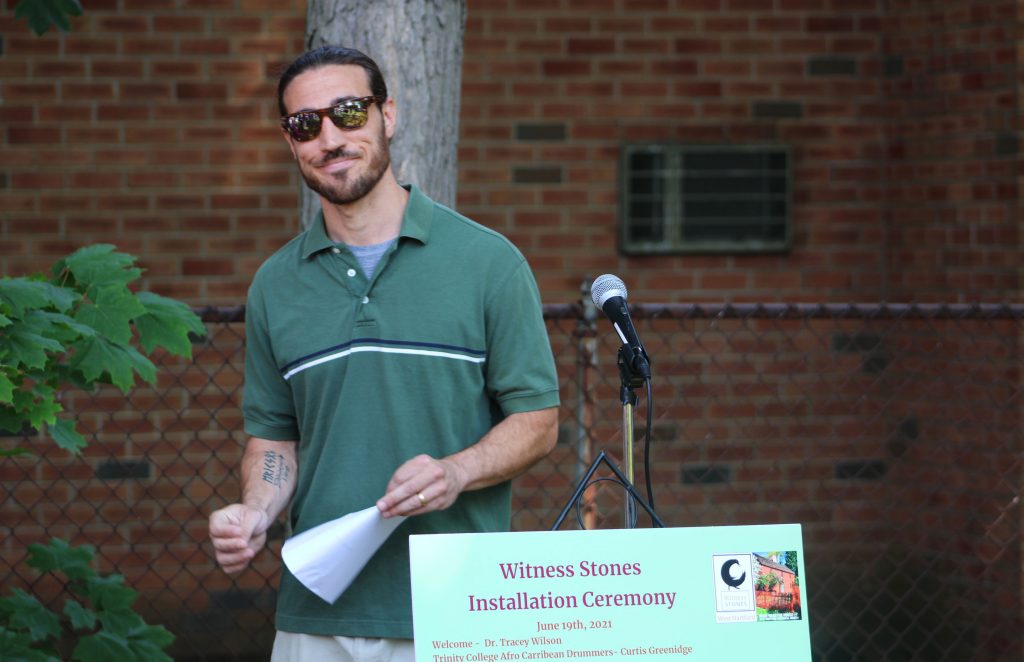
Juneteenth Witness Stones Project at Old Center Cemetery. Photo Credit: Sophie Christensen
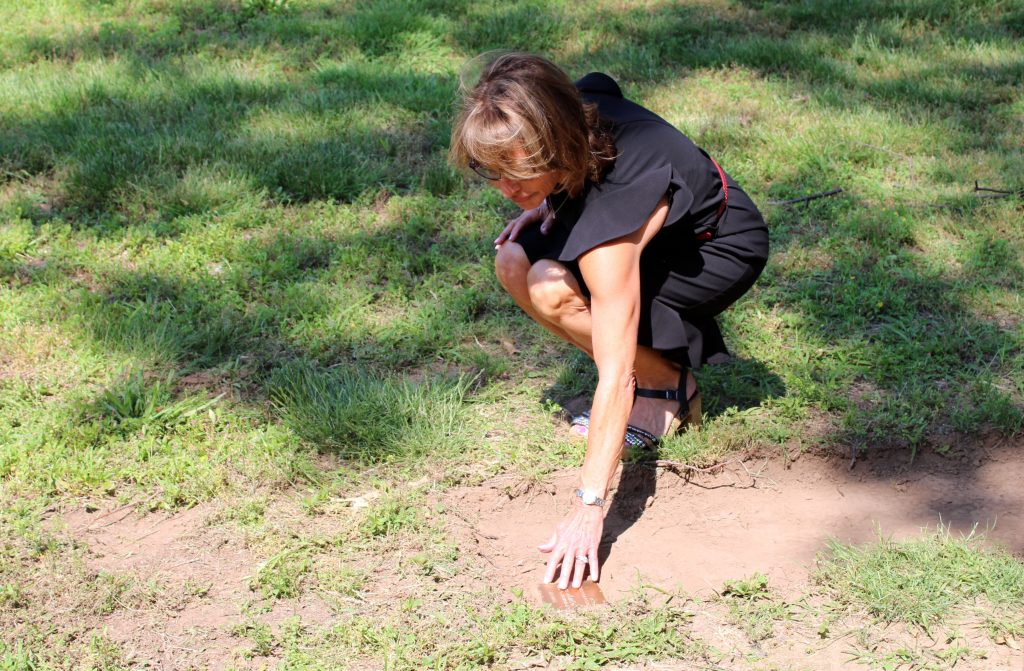
Mayor Shari Cantor placing Witness Stone at Old Center Cemetery. Photo Credit: Sophie Christensen
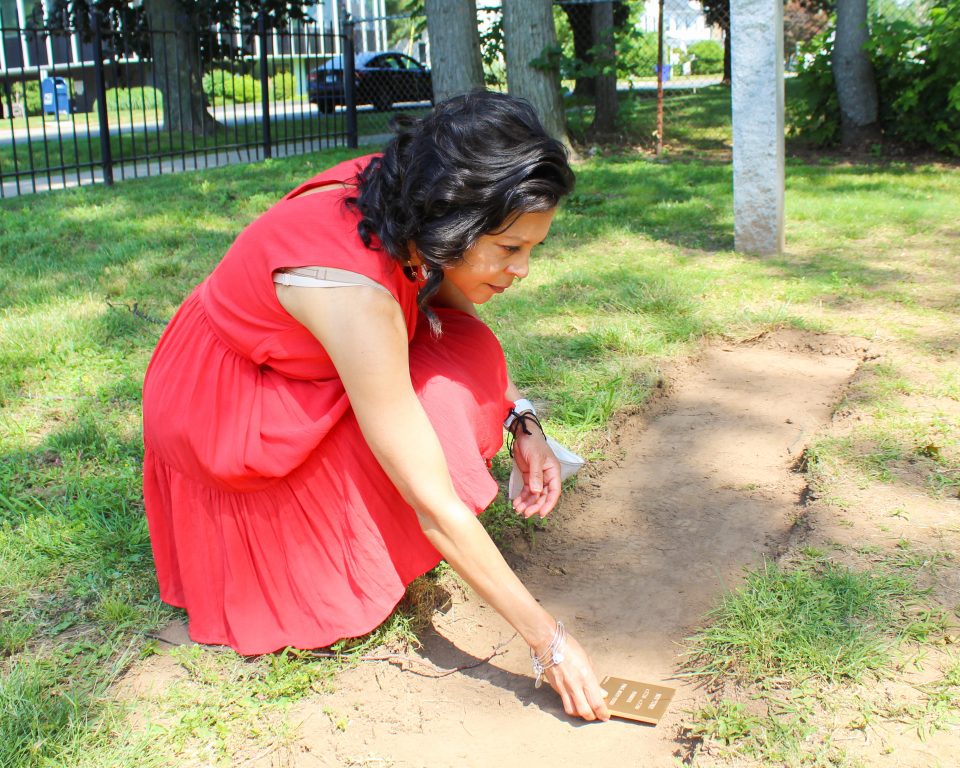
State Rep. Tammy Exum placing Witness Stone for Sam. Photo Credit: Lily Guberman
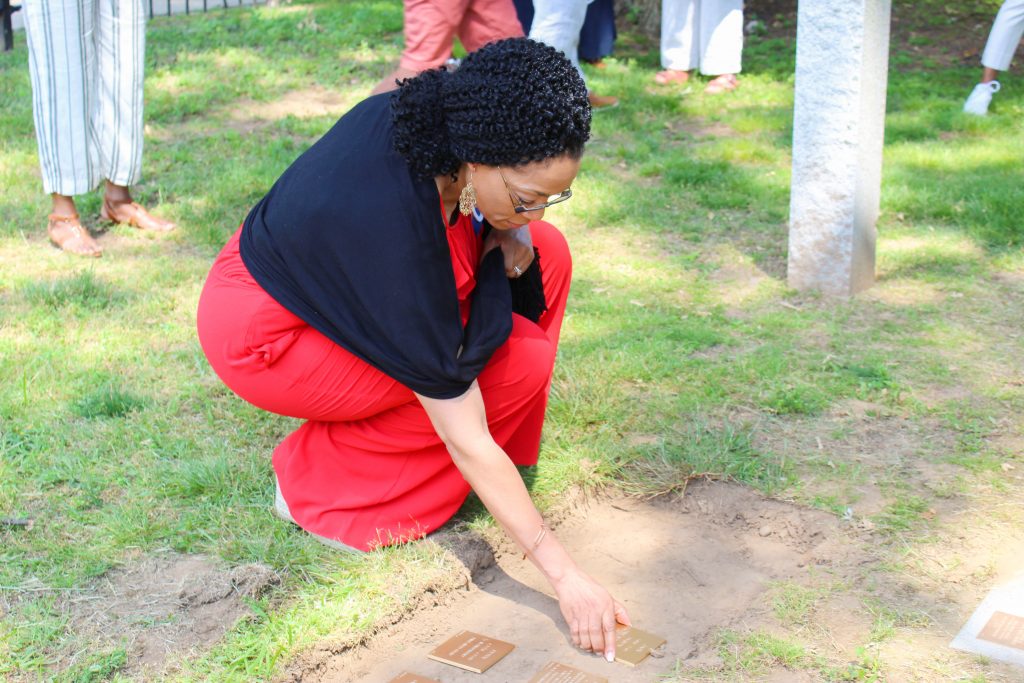
Dr. Lorna Thomas-Farquharson placing Witness Stone at Old Center Cemetery. Photo Credit: Lily Guberman
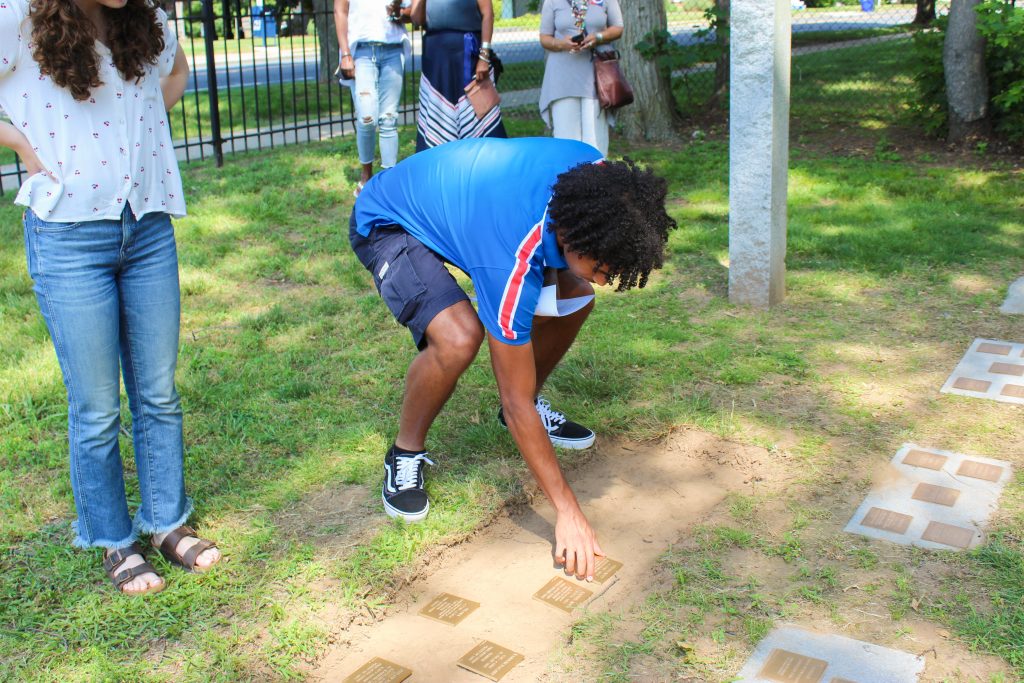
Placing Witness Stones at Old Center Cemetery. Photo Credit: Lily Guberman
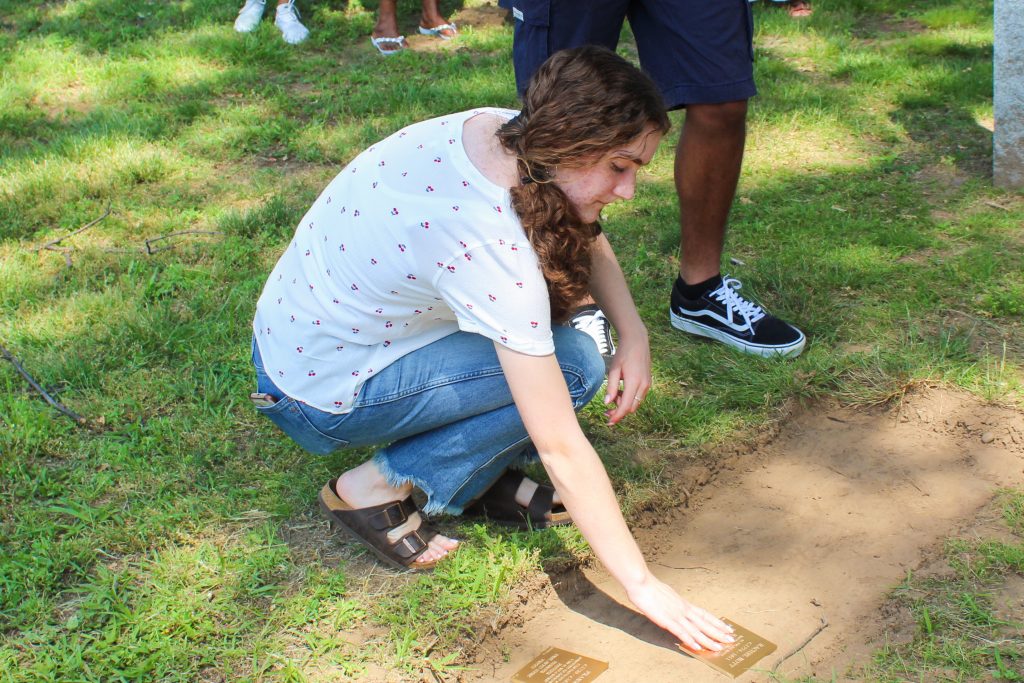
Placing Witness Stones at Old Center Cemetery. Photo Credit: Lily Guberman
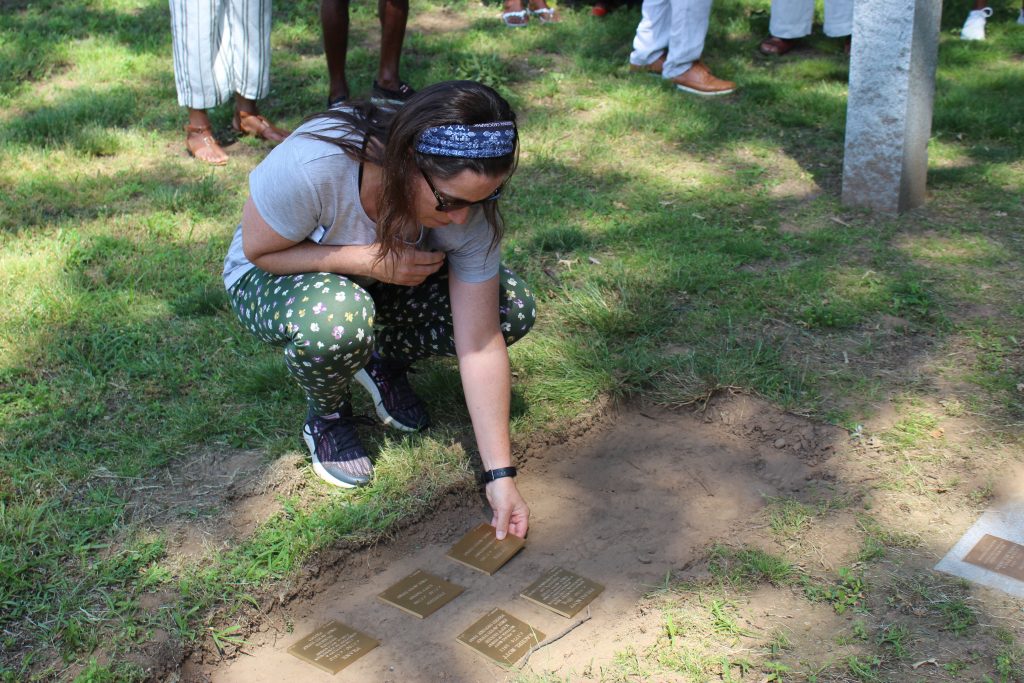
Placing Witness Stones at Old Center Cemetery. Photo Credit: Lily Guberman
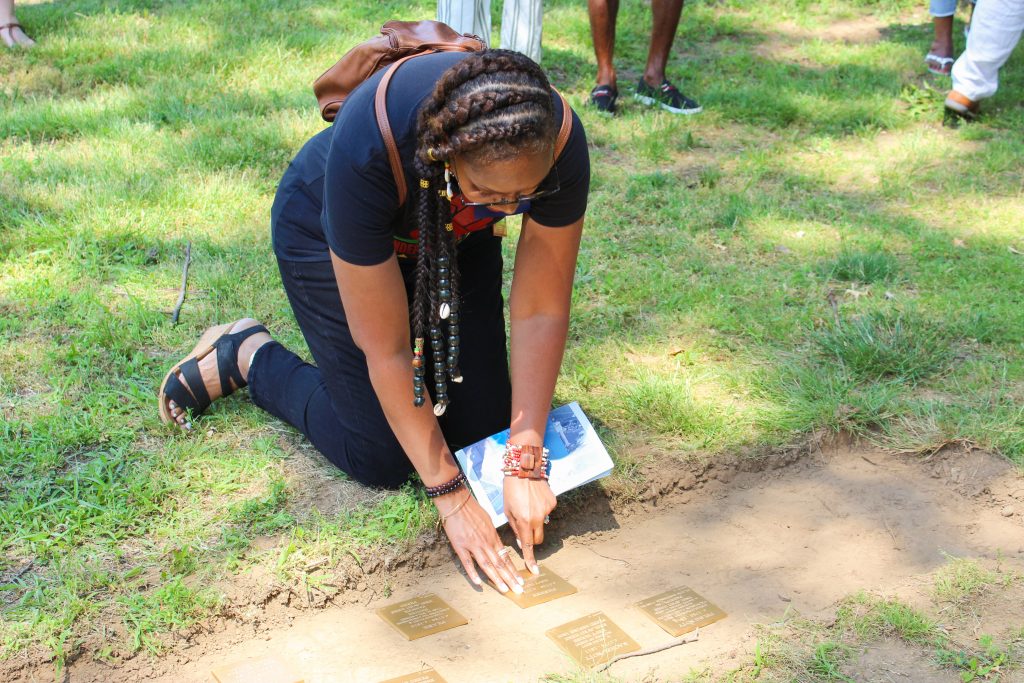
Placing Witness Stones at Old Center Cemetery. Photo Credit: Lily Guberman
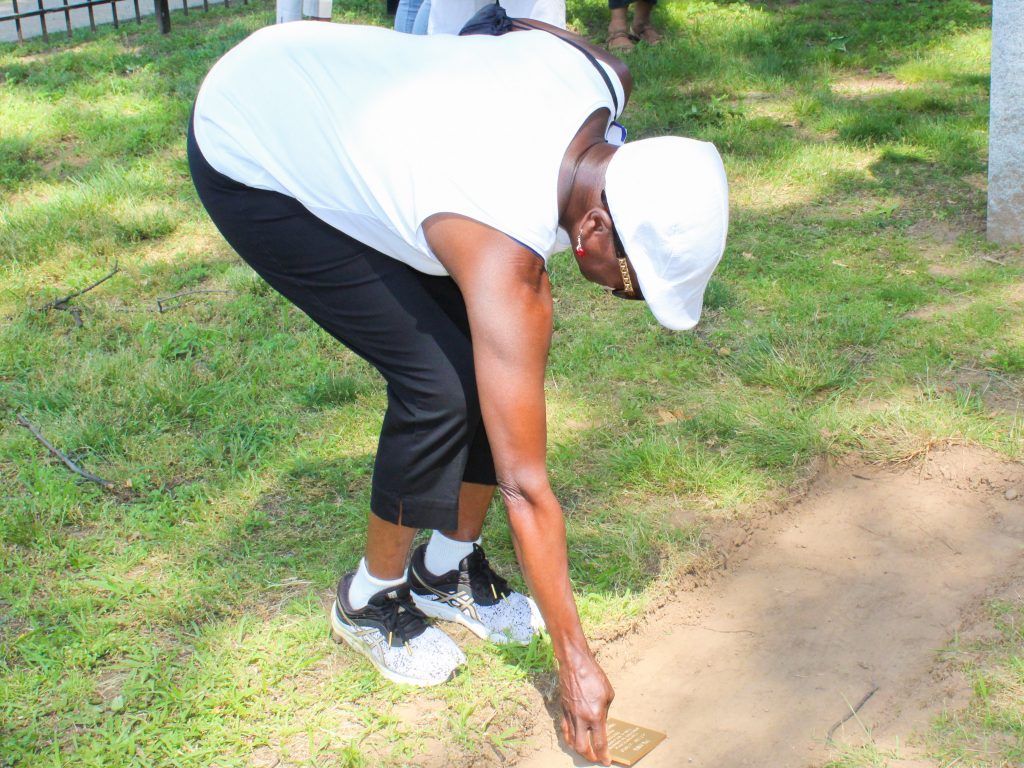
Placing Witness Stones at Old Center Cemetery. Photo Credit: Lily Guberman
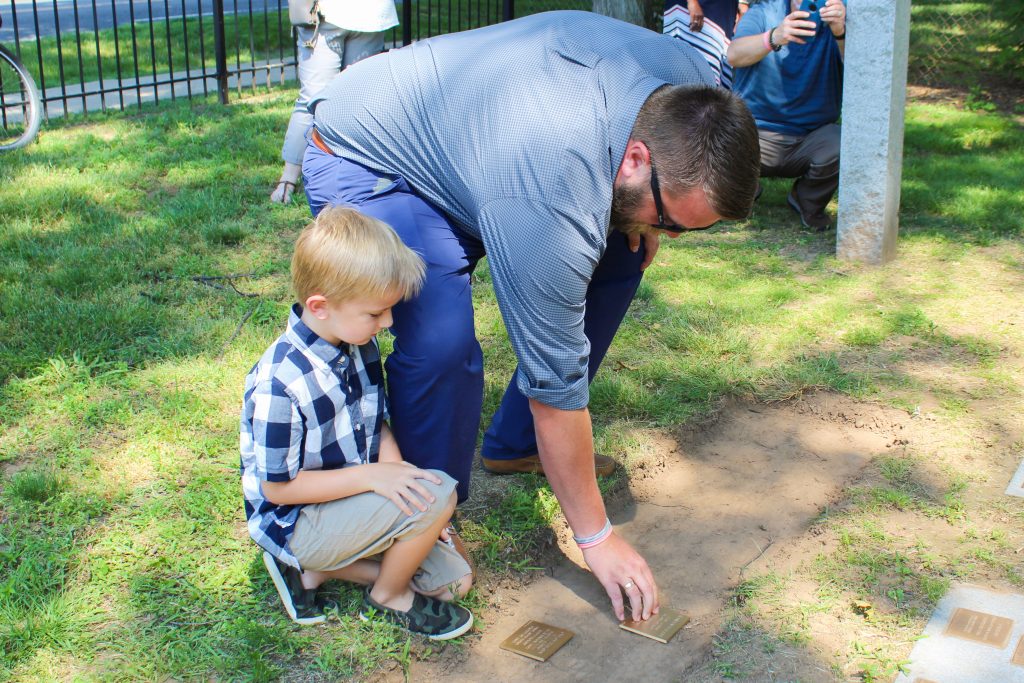
Placing Witness Stones at Old Center Cemetery. Photo Credit: Lily Guberman
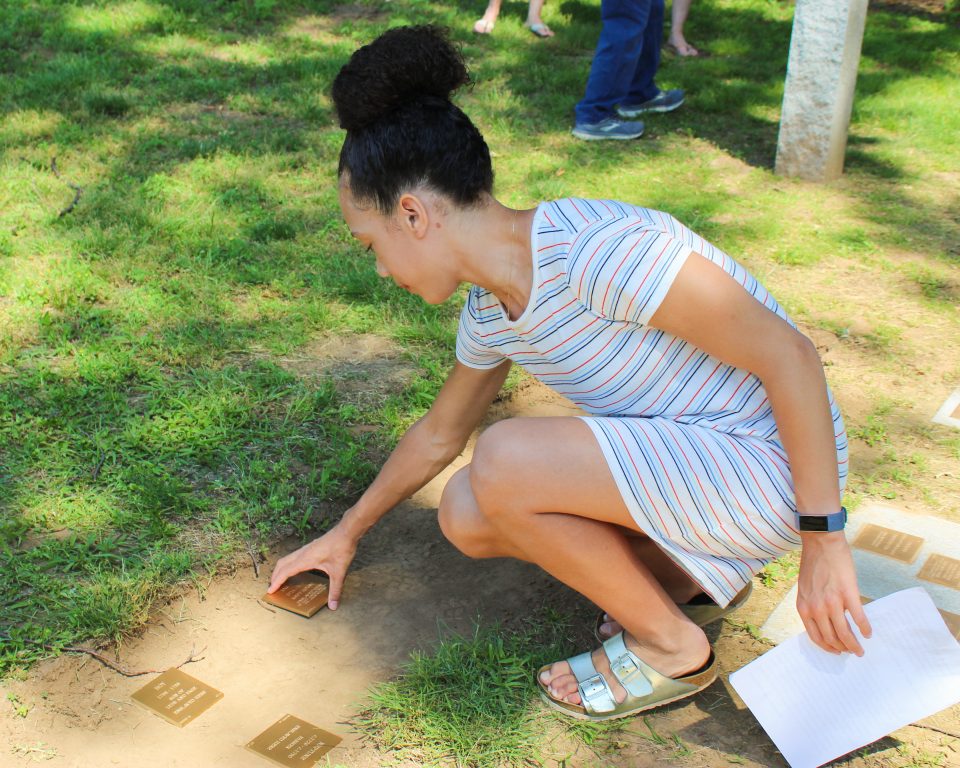
Placing Witness Stones at Old Center Cemetery. Photo Credit: Lily Guberman
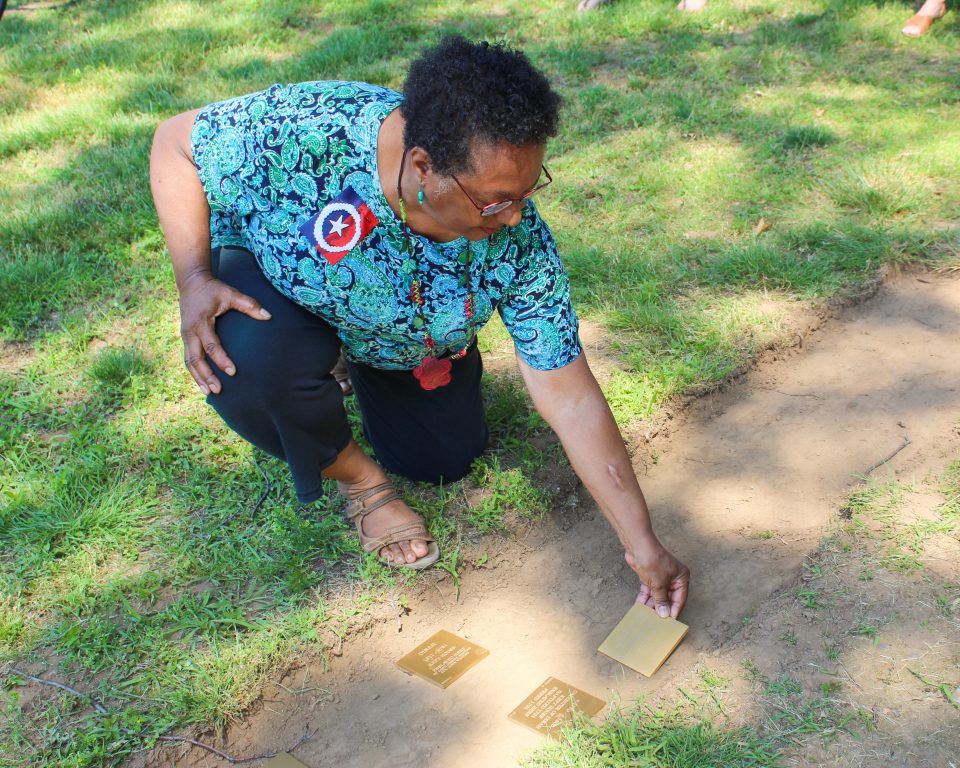
Placing Witness Stones at Old Center Cemetery. Photo Credit: Lily Guberman
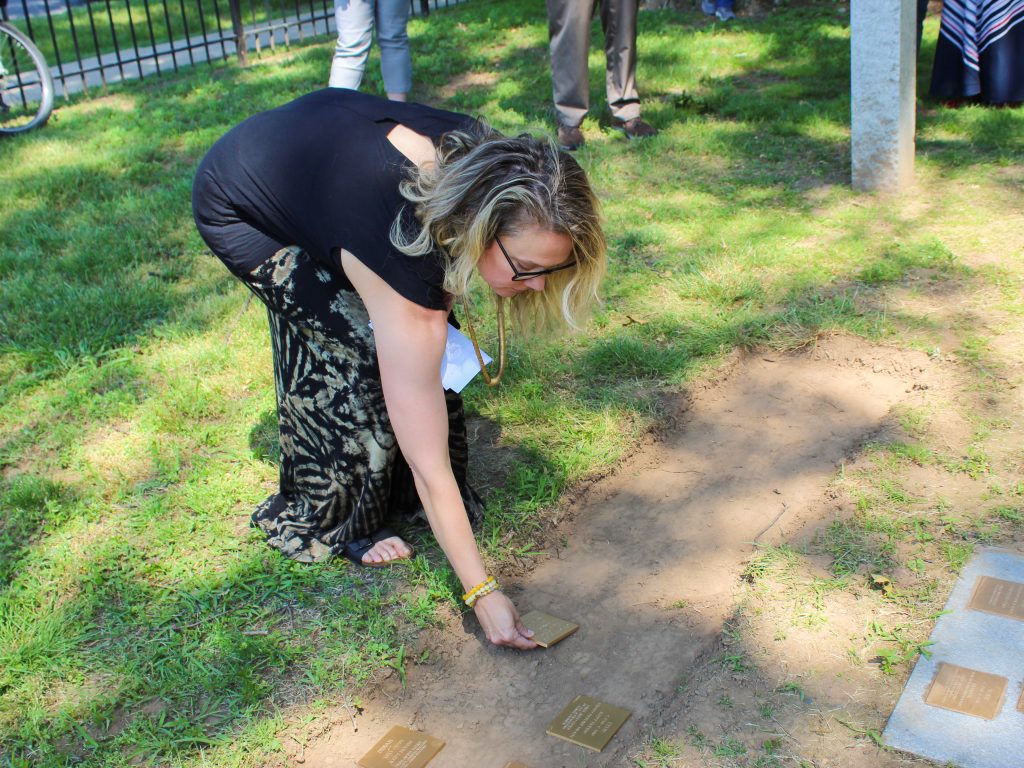
Placing Witness Stones at Old Center Cemetery. Photo Credit: Lily Guberman
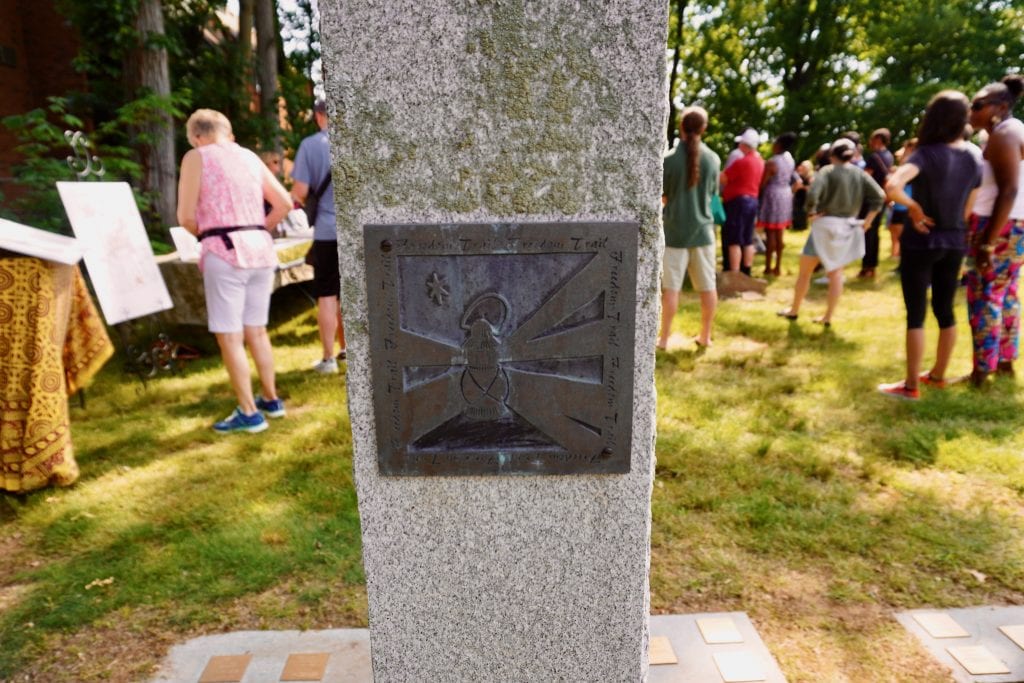
Witness Stones Installation at Old Center Cemetery. June 19, 2021. Photo credit: Ronni Newton
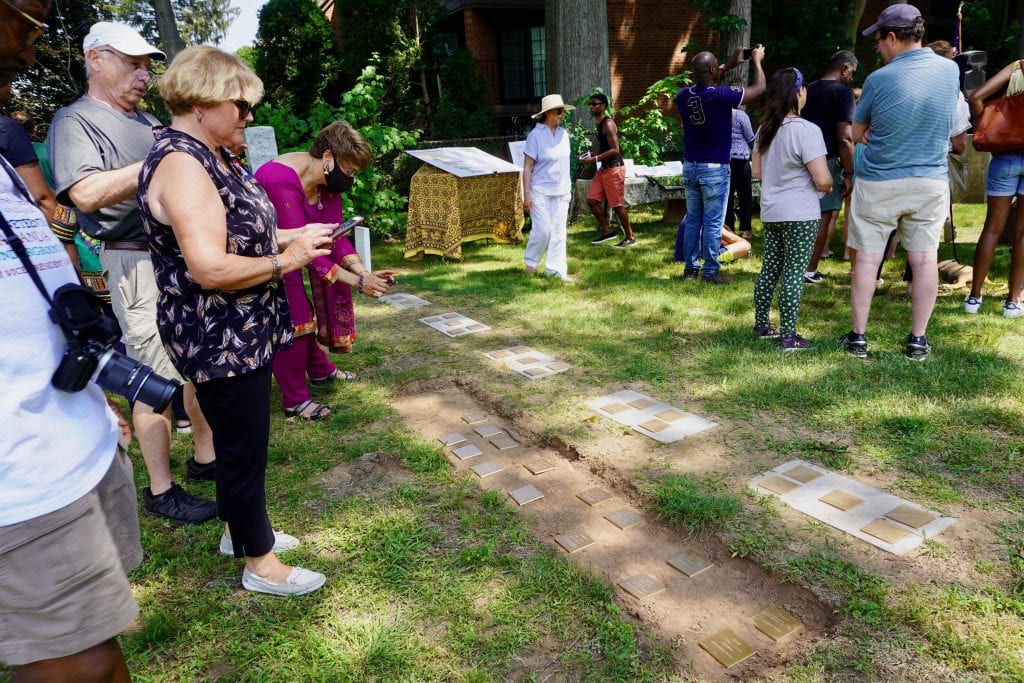
15 new Witness Stones have been installated at Old Center Cemetery. June 19, 2021. Photo credit: Ronni Newton
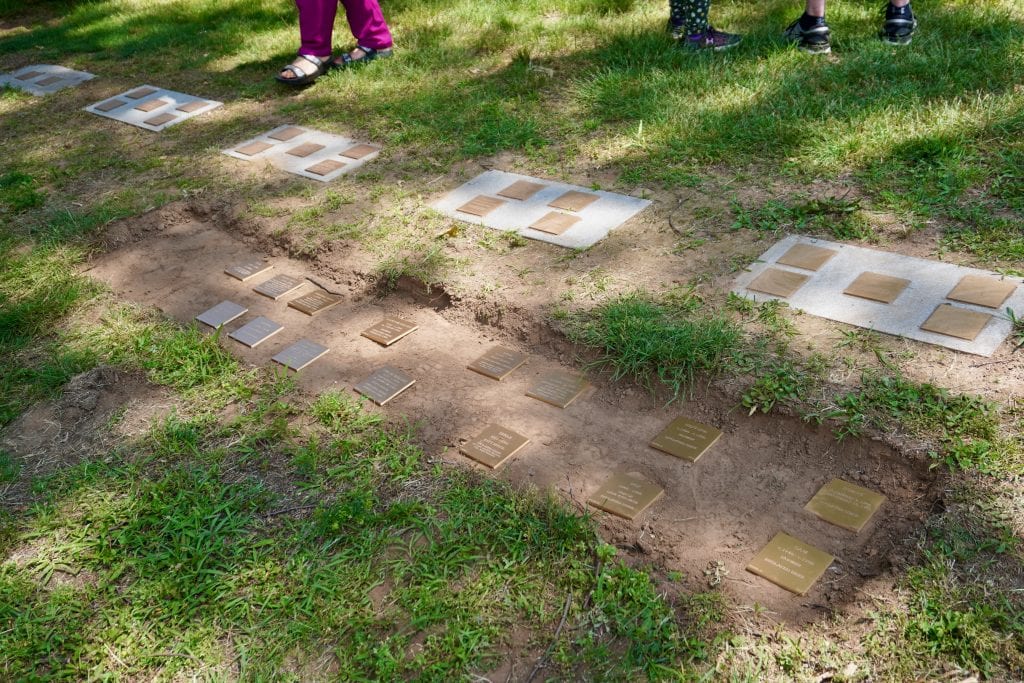
Witness Stones Installation at Old Center Cemetery. June 19, 2021. Photo credit: Ronni Newton
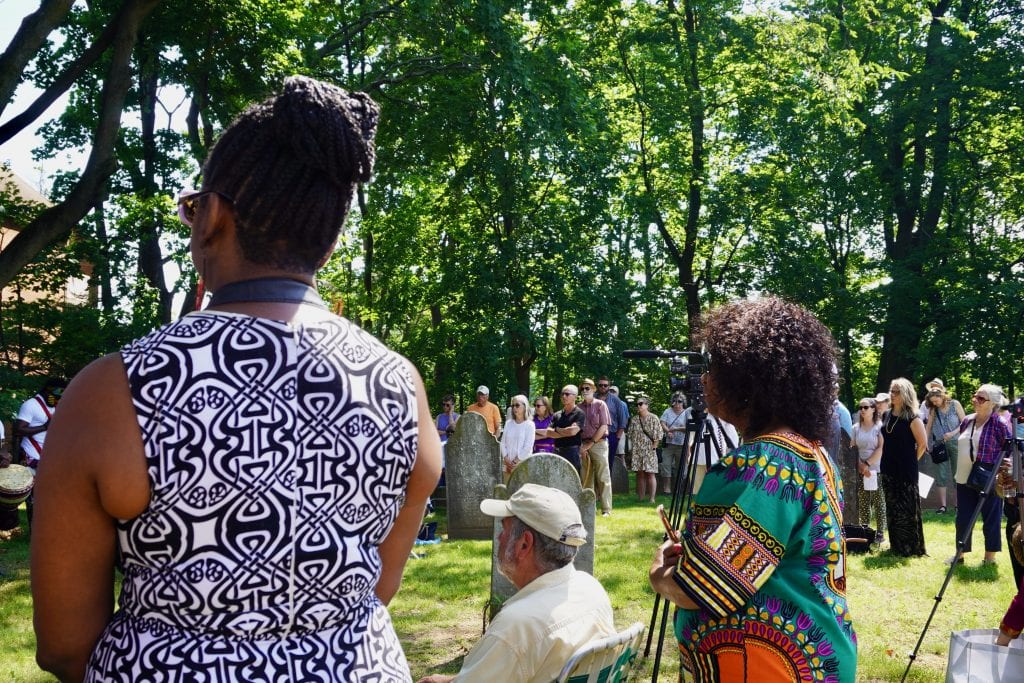
Witness Stones Installation at Old Center Cemetery. June 19, 2021. Photo credit: Ronni Newton
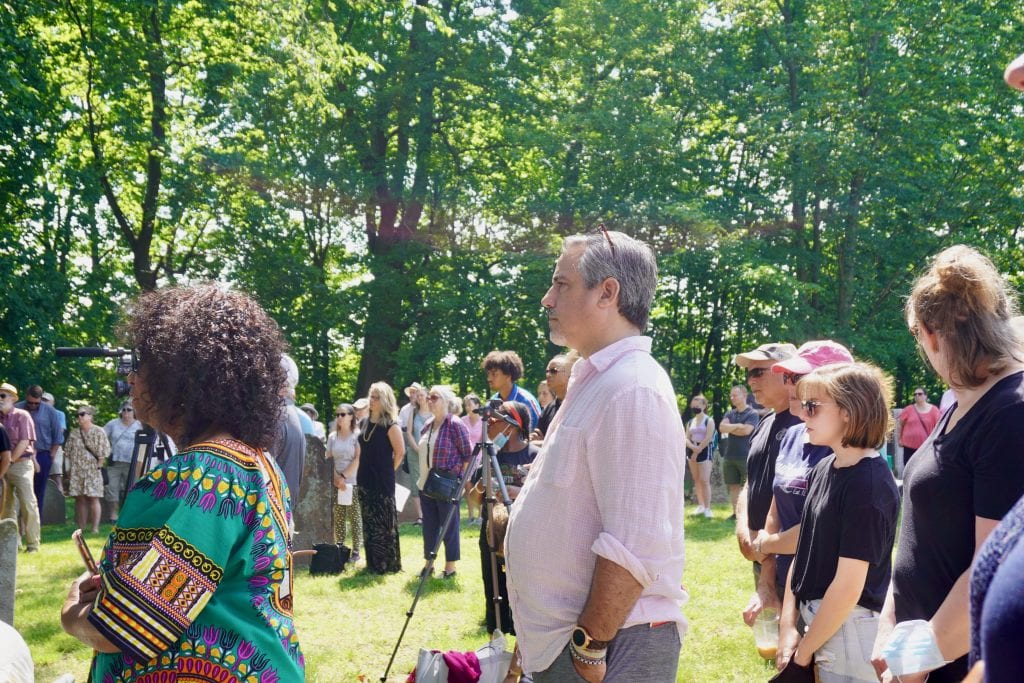
Witness Stones Installation at Old Center Cemetery. June 19, 2021. Photo credit: Ronni Newton
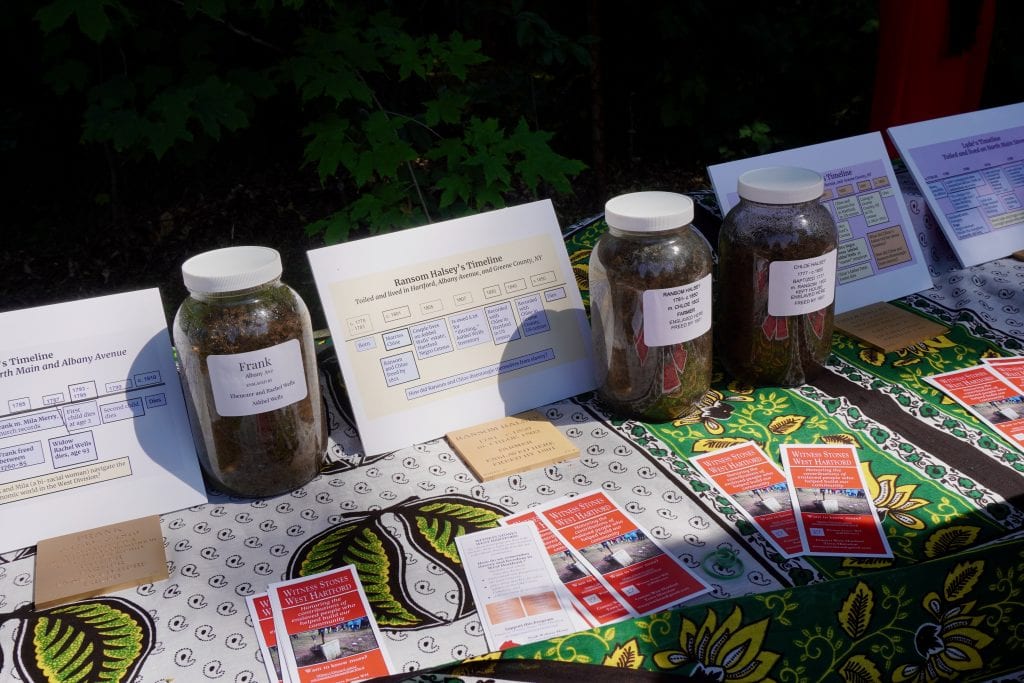
Witness Stones Installation at Old Center Cemetery. June 19, 2021. Photo credit: Ronni Newton
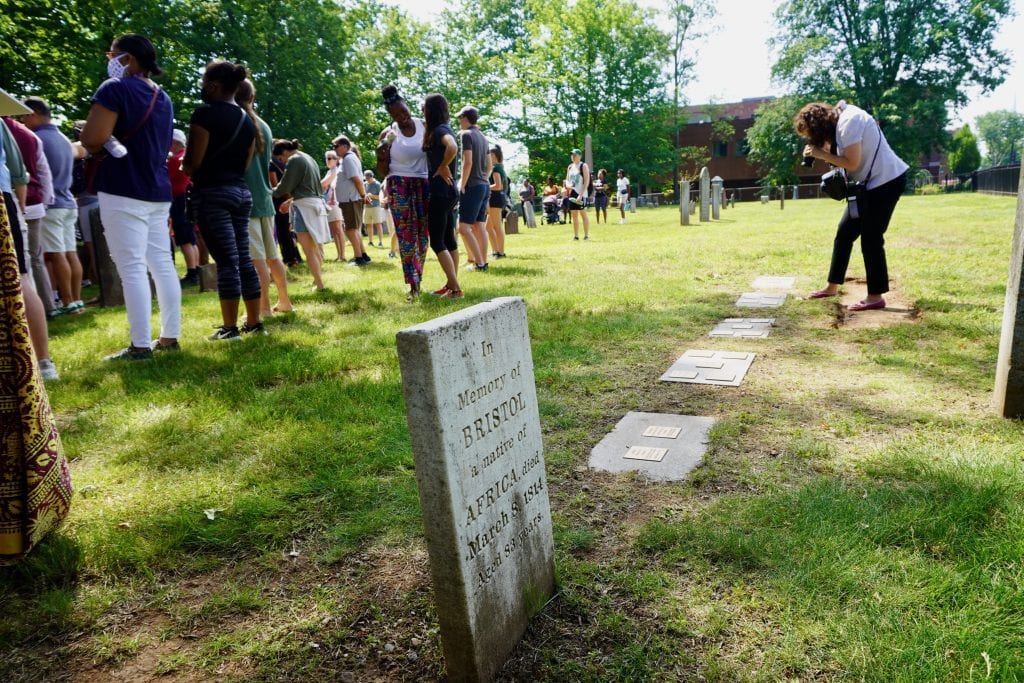
Witness Stones Installation at Old Center Cemetery. June 19, 2021. Photo credit: Ronni Newton
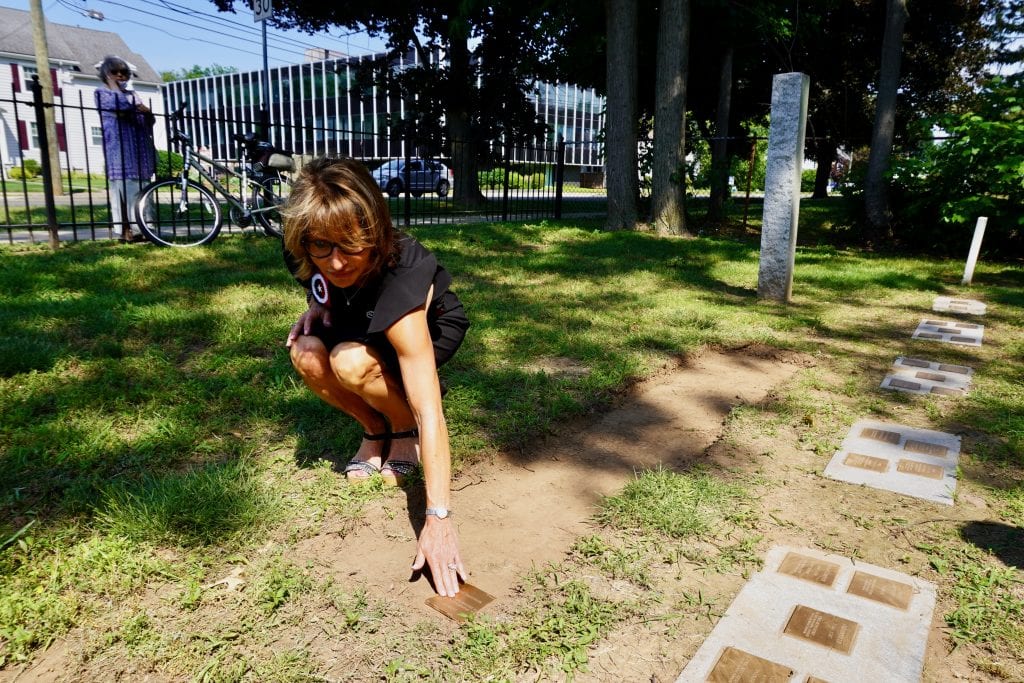
Mayor Shari Cantor places a Witness Stone at Old Center Cemetery. June 19, 2021. Photo credit: Ronni Newton
Like what you see here? Click here to subscribe to We-Ha’s newsletter so you’ll always be in the know about what’s happening in West Hartford! Click the blue button below to become a supporter of We-Ha.com and our efforts to continue producing quality journalism.



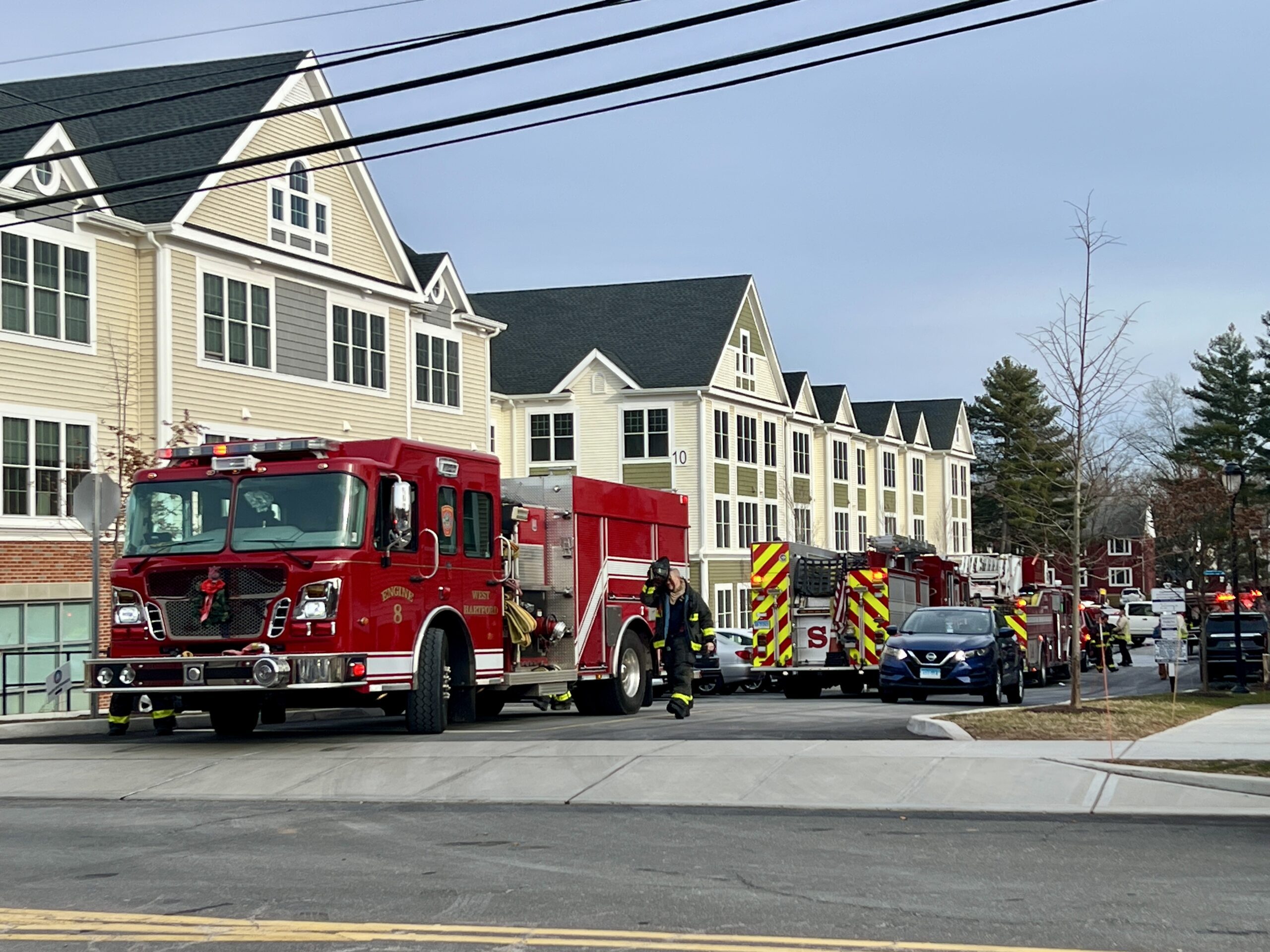
[…] Sixteen speakers each placed a new Witness Stone in the cemetery. Before placing the stones, speakers shared information about the enslaved person’s life. They also shared poems and words of gratitude for the organizers of the Witness Stones Project. Similar sentiments ran through every speech: triumph and joy for Juneteenth’s status as a national holiday, but also sadness and solemn acknowledgement for the history of enslavement in West Hartford. Continue reading. […]